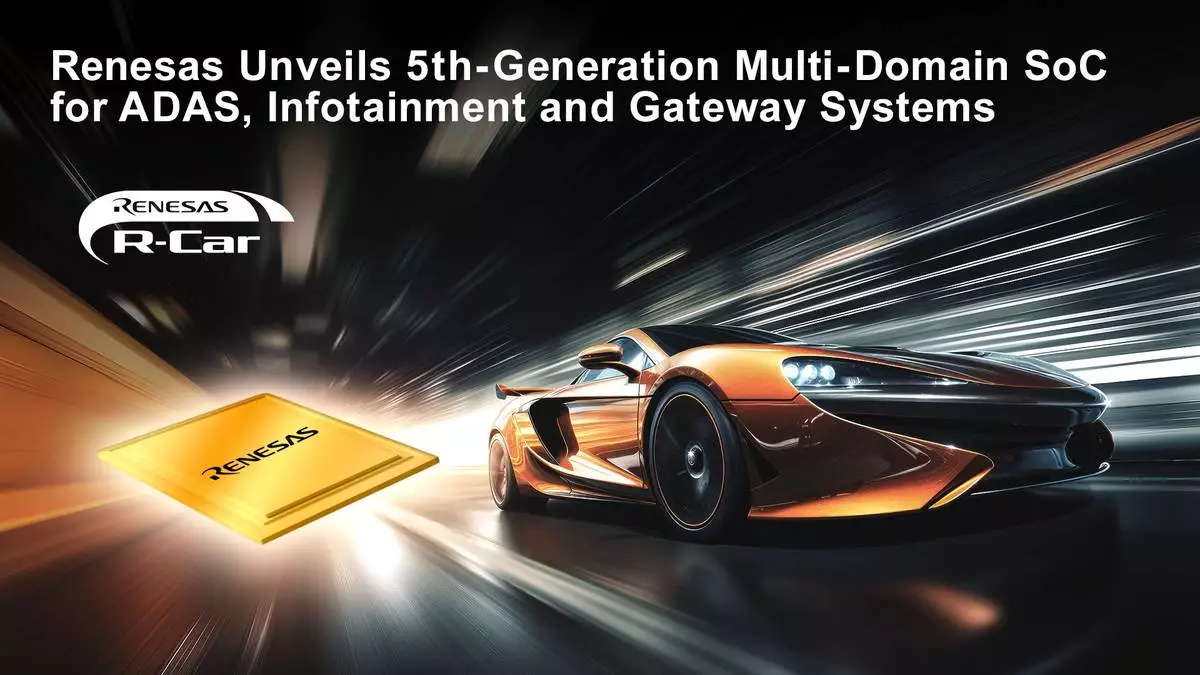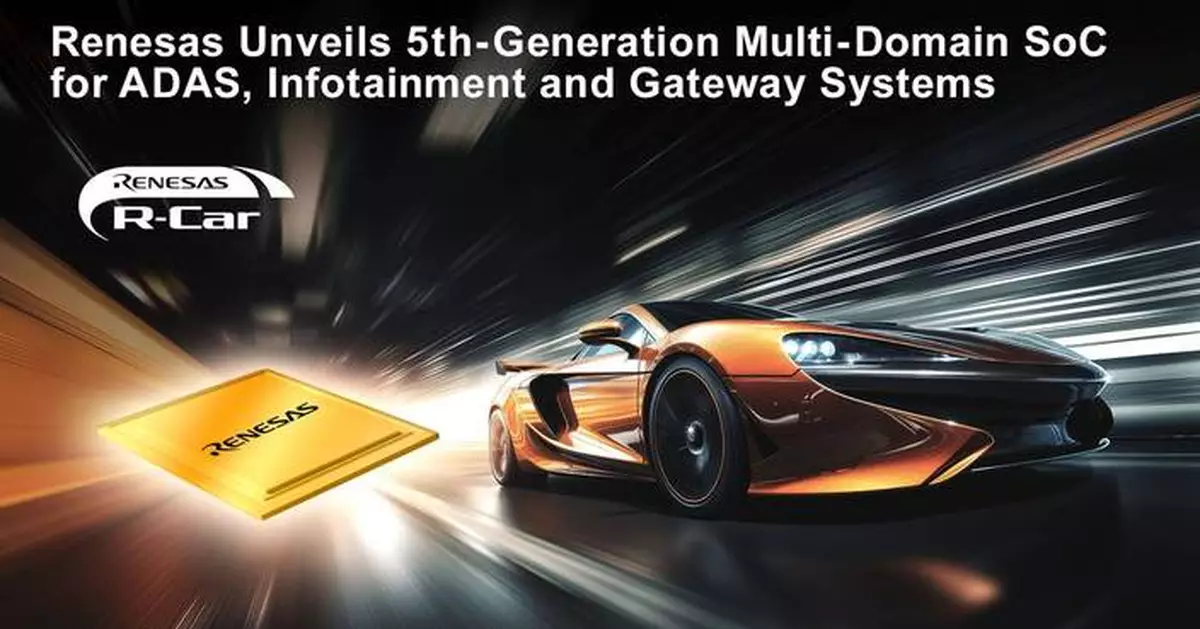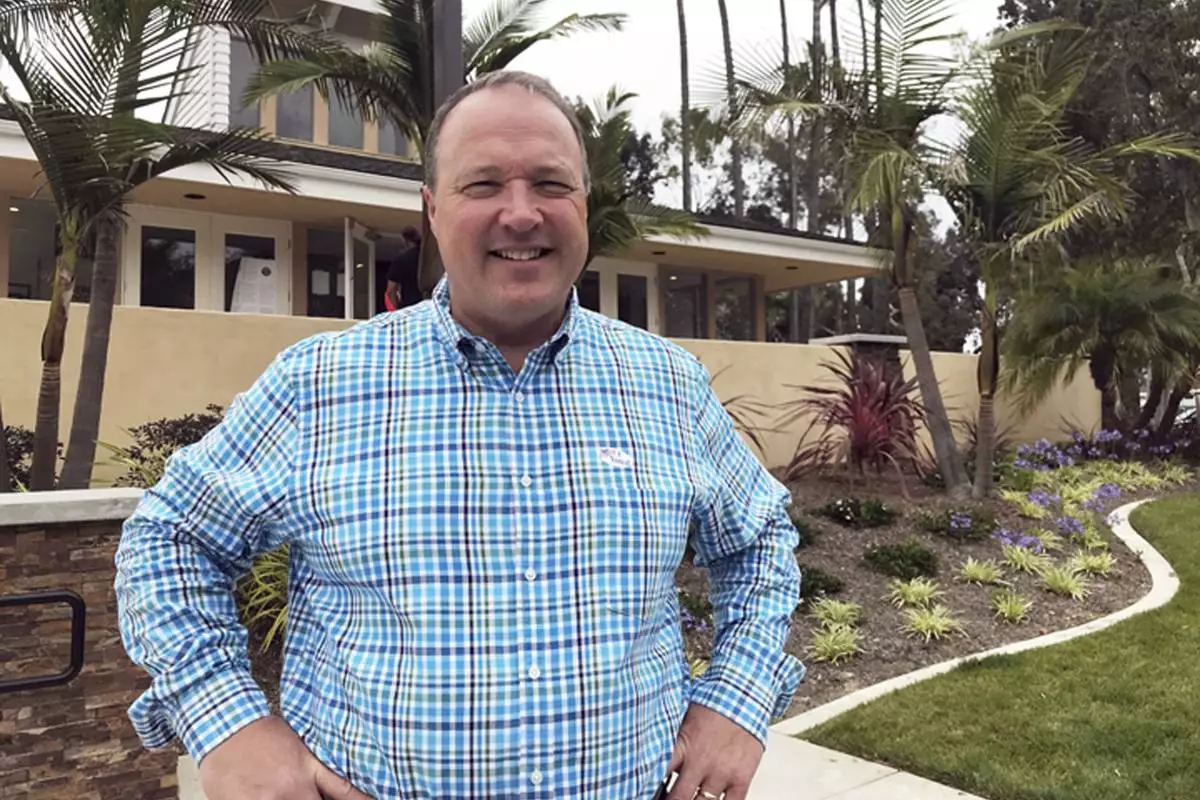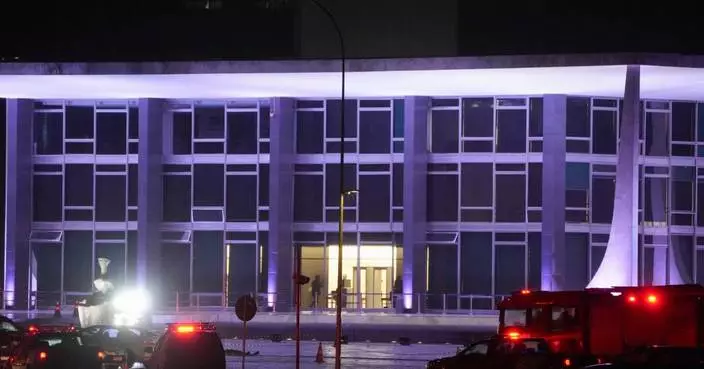MUNICH & TOKYO--(BUSINESS WIRE)--Nov 13, 2024--
Renesas Electronics Corporation (TSE:6723), a premier supplier of advanced semiconductor solutions, today launched the new generation of automotive fusion system-on-chips (SoCs), serving multiple automotive domains including Advanced Driver Assistance Systems (ADAS), in-vehicle infotainment (IVI), and gateway applications on a single chip. Built using the latest 3-nanometer (nm) automotive process technology, the highly-anticipated R-Car X5H SoC, which is the first device in the R-Car X5 series, offers the highest level of integration and performance in the industry, allowing OEMs and Tier 1s to shift to centralized Electronic Control Units (ECUs) for streamlined development and future-proof system solutions. Renesas’ R-Car X5H is among the first in the industry to offer highly-integrated, secure processing solutions on a single chip for multiple automotive domains, thanks to its unique hardware-based isolation technology. Additionally, the new SoC offers the option to expand AI and graphics processing performance using chiplet technology.
This press release features multimedia. View the full release here: https://www.businesswire.com/news/home/20241113586761/en/
As the highest performance device within the fifth-generation (Gen 5) R-Car Family, the R-Car X5H directly addresses the growing complexity of Software-Defined Vehicle (SDV) development. These challenges include optimizing compute performance, power consumption, cost, hardware and software integration – while ensuring vehicle safety. By tightly coupling application processing, real-time processing, GPU and AI compute, large display capabilities, and sensor connectivity on a single chip, these devices enable a new class of automated driving, IVI and gateway applications.
The new SoC series enables AI acceleration of up to 400 TOPS with industry-leading TOPS/W performance, and GPU processing of up to 4 TFLOPS*¹. It incorporates a total of 32 Arm® Cortex®-A720AE CPU cores for application processing, delivering over 1,000K DMIPS performance; and six Arm Cortex-R52 dual lockstep CPU cores delivering over 60K DMIPS performance with support for ASIL D capabilities without external microcontrollers (MCUs). Manufactured using one of TSMC’s most advanced process nodes, the new SoC series achieves both top-end CPU performance and a 30-35 percent reduction in power consumption*² compared to devices designed for a 5-nm process node. These power-efficient features significantly lower overall system costs by eliminating the need for additional cooling solutions while also extending vehicle driving range.
Chiplet Extensions for Flexibility and Additional Performance
While the R-Car Gen 5 SoCs come with powerful native NPU and GPU processing engines, Renesas is offering customers the ability to scale up their performance through chiplet extensions. When combining a 400-TOPS on-chip NPU with an external NPU via a chiplet extension, for example, it’s possible to scale their AI processing performance by three to four times or more. For seamless chiplet integration, the R-Car X5H offers the standard UCle (Universal Chiplet Interconnect Express) die-to-die interconnect and APIs, facilitating interoperability with other components in a multi-die system, even if they are non-Renesas chips. This flexible design approach allows car OEMs and Tier 1s to mix and match different functions and customize their systems including future upgrades across vehicle platforms.
Mixed-Criticality Processing for Secure Isolation
While automakers and Tier-1 suppliers are demanding more performance and functionality, safety remains their number one priority. While other SoCs rely solely on software-based isolation, the R-Car X5H SoC also offers hardware-based Freedom from Interference (FFI) technology. This hardware design implementation securely isolates safety-critical functions, such as brake-by-wire, from non-critical functions. Functions deemed safety critical can be assigned their own separate, redundant domains, each having its own independent CPU core, memory and interfaces, thus preventing potentially catastrophic vehicle failures in the event of a hardware or software fault from a different domain. The R-Car X5H also comes with Quality of Service (QoS) management that determines workload priorities and assigns processing resources in real time.
“Our latest innovations in the R-Car Gen 5 platform tackle the complex challenges the automotive industry faces today,” said VivekBhan, Senior Vice President and General Manager of High Performance Computing at Renesas. “Our customers are looking for end-to-end automotive-grade system solutions that cover everything from hardware optimization, safety compliance to flexible and scalable architecture selection and seamless tools and software integration. Our R-Car Gen 5 Family meets these demands and we are committed to helping the industry accelerate SDV development and Shift-Left innovations for the next era of automotive technology.”
“We are thrilled to partner with a trusted automotive technology leader like Renesas to bring their latest innovation to market using our state-of-the-art 3-nm process technology,” said Dr. Kevin Zhang, TSMC’s Senior Vice President of Business Development and Global Sales, and Deputy Co-COO. “Our N3A process is optimized for advanced automotive SoCs, with industry-leading 3-nm performance at AEC Q-100 Grade 1 reliability. We are excited to work with Renesas to develop this R-Car Gen 5 platform, and help re-shape the future of ‘silicon-defined vehicles’.”
Asif Anwar, Executive Director of Automotive Market Analysis, TechInsights, stated, “The path to the SDV will be underpinned by the digitalization of the cockpit, vehicle connectivity, and ADAS capabilities. The vehicle electric/electronic (E/E) architecture will be the core enabler as features and functions are integrated into zonal and centralized controllers that will provide the necessary compute capabilities. TechInsights forecasts the zonal controller and high-performance compute SoC processor market will grow at a CAGR of 17% between 2028 and 2031.”
Anwar continued, “Renesas is a top three supplier of automotive processors and is leveraging decades of experience with its fifth generation R-Car X5H SoC that will scale with the requirements of an SDV. By leveraging the 3-nm process, the R-Car X5H SoC allows the automotive industry to implement a multi-use solution set that can be used across the vehicle platform with optimized power budgets. Combining this with the RoX SDV platform, Renesas can offer a software-first, cross-domain approach that will shorten the time-to-market for the automotive industry.”
The Fifth-Generation R-Car Platform with Scalability
Renesas’ R-Car Gen 5 supports the broadest range of processing requirements in the industry – from zonal ECUs to high-end central compute, serving from entry-level vehicles to luxury-class models. Thanks to a new unified hardware architecture based on Arm CPU cores, R-Car Gen 5 developers can reuse the same software and tools and applications from Renesas’ broad line of new 64-bit SoCs and future products including crossover 32-bit MCUs and automotive 32-bit MCUs. As part of the R-Car next-generation family, Renesas is extending its vehicle control portfolio with a new R-Car MCU series, which will be also powered by Arm. Renesas plans to sample the new 32-bit MCU series with enhanced security for body and chassis applications in Q1/2025.
R-Car Open Access (RoX) Platform Available for SDV Development
Renesas’ latest R-Car X5H and all future Gen 5 products are designed to accelerate SDV development by combining hardware and software into a comprehensive development platform. The newly launched R-Car Open Access (RoX) SDV platform integrates all essential hardware, operating systems (OS), software and tools needed for automotive developers to rapidly develop next-generation vehicles with secure and continuous software updates. RoX provides OEMs and Tier-1 suppliers the flexibility to virtually design a broad range of scalable compute solutions for ADAS, IVI, gateway, and cross-domain fusion systems as well as body control, domain, and zone control systems.
Demonstration at electronica 2024
Renesas will present a live demonstration of the R-Car Gen 5 development environment at electronica 2024 in Munich, Germany, November 12-15 in Hall B4, Stand 179. At the show, attendees will have the opportunity to watch how engineers can design automotive software using the Renesas Open Access (RoX) development platform.
Availability
The R-Car X5H will be sampling to select automotive customers in 1H/2025, with production scheduled in 2H/2027. More information about the new devices is available here.
A blog on the new R-Car X5H is also available here.
About Renesas Electronics Corporation
Renesas Electronics Corporation ( TSE: 6723 ) empowers a safer, smarter and more sustainable future where technology helps make our lives easier. A leading global provider of microcontrollers, Renesas combines our expertise in embedded processing, analog, power and connectivity to deliver complete semiconductor solutions. These Winning Combinations accelerate time to market for automotive, industrial, infrastructure and IoT applications, enabling billions of connected, intelligent devices that enhance the way people work and live. Learn more at renesas.com. Follow us on LinkedIn, Facebook, X, YouTube, and Instagram.
(Remarks) All names of products or services mentioned in this press release are trademarks or registered trademarks of their respective owners.
*¹Equivalent TFLOPS based on data from Manhattan 3.1 industry benchmarks.
*² Data is based on Renesas’ design implementation.


(Photo: Business Wire)












